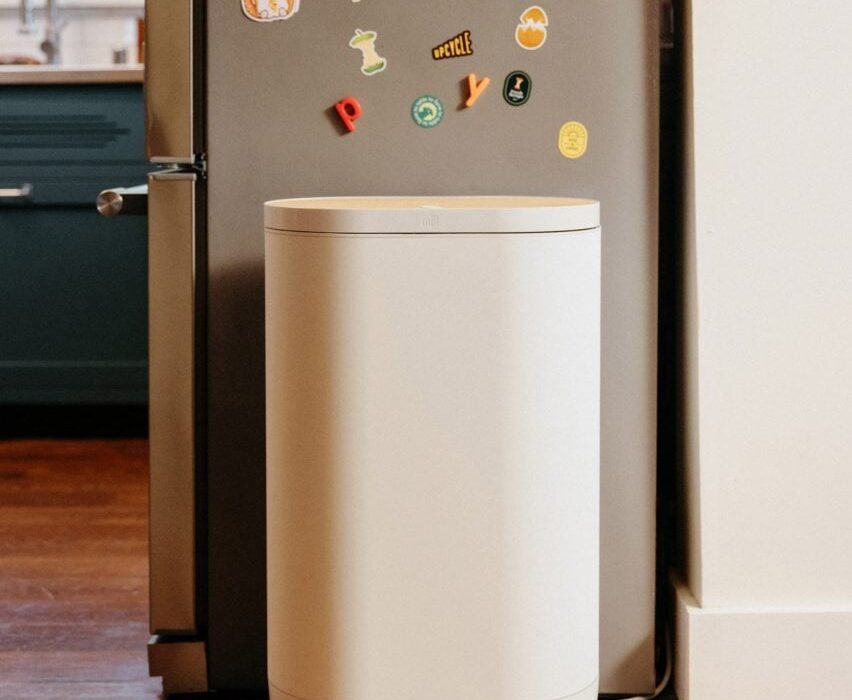US start-up Mill aimed to create the ultimate solution to household food waste when designing this bin, which dries out any leftovers so they can be posted to the company and given a new purpose.
Developed by two former Nest employees, the Mill bin slowly heats and mixes any food waste on a low-power cycle to dehydrate and shrink the scraps, allowing the bin to be emptied less often.
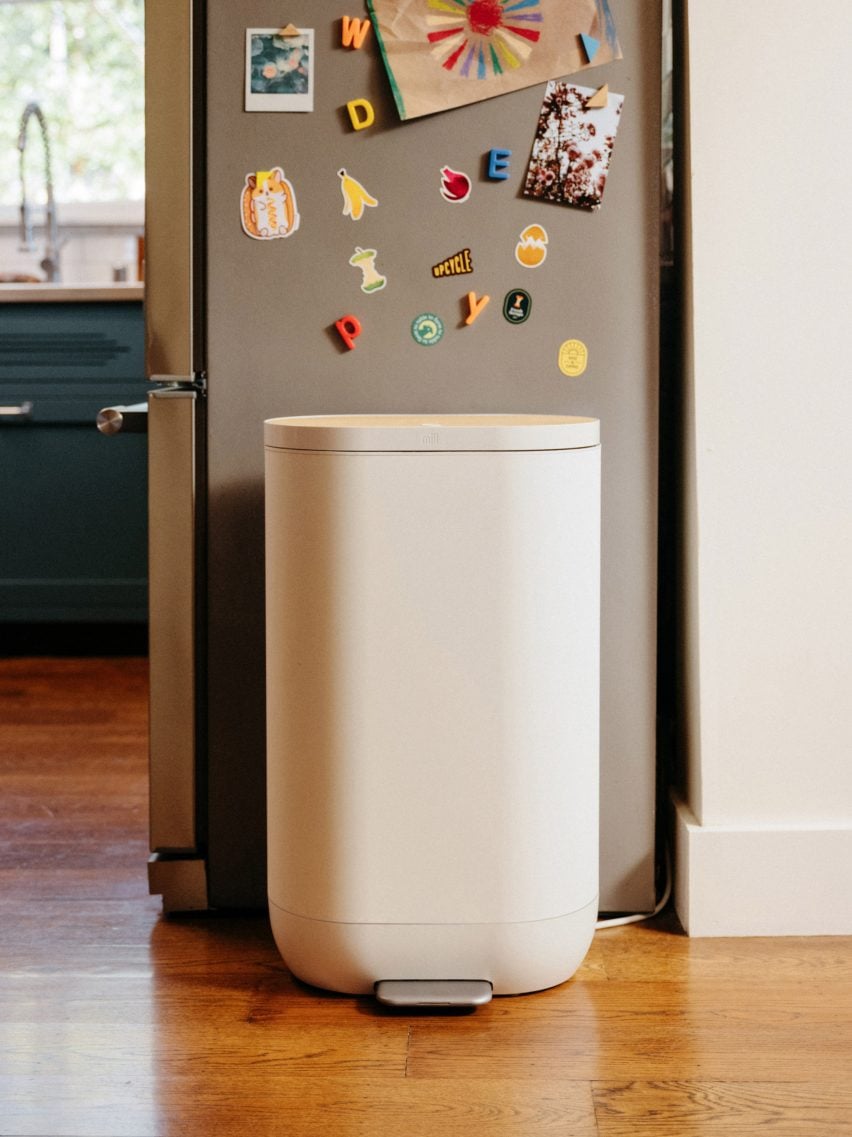
After a few weeks, when the bin is full, the user tips the resulting “food grounds” into a prepaid box and schedules a pick-up to have it posted back to Mill as part of a membership-based service.
The process presents an alternative to sending food to landfill and composting, which can require specific conditions or combinations of waste to work effectively.
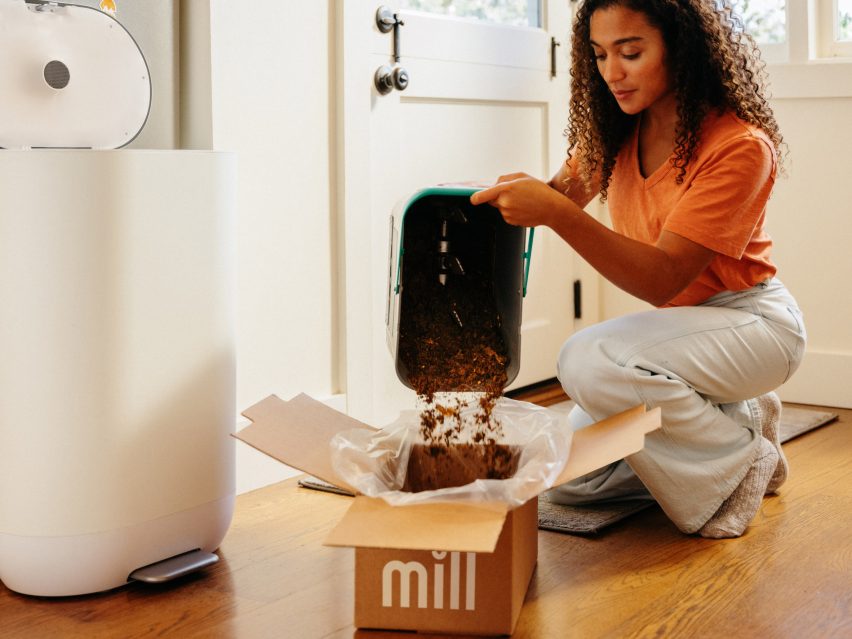
The company is currently working through the scientific and regulatory processes to turn the grounds into a commercial chicken feed ingredient.
Mill’s goal is to keep leftovers in the food system and reuse them in the most valuable, resource-efficient way.
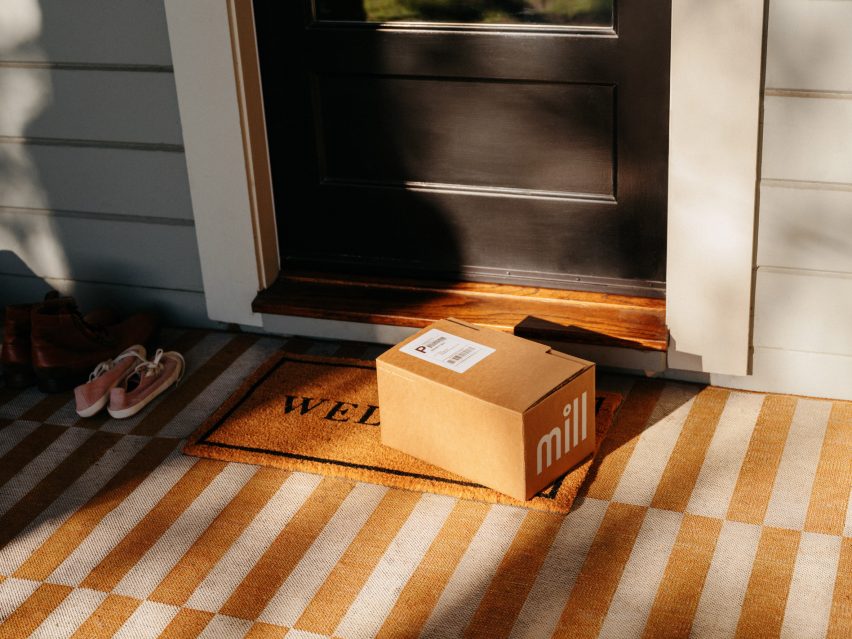
While the bin is in use, Mill promises that there should be no noticeable smell – even as the food scraps are heated.
The evaporating water and air from the bin are pushed through an odour management system that incorporates a charcoal filter before the air is expelled through an exhaust fan at the rear of the bin.

Mill was founded by Matt Rogers and Harry Tannenbaum at the start of the pandemic, when the duo found themselves “stuck at home staring at and smelling our own trash”, and becoming increasingly obsessed with waste, according to Tannenbaum.
“We looked at what makes up landfills,” he told Dezeen. “The single largest inhabitant is food and our kitchens at home are the number one source.”
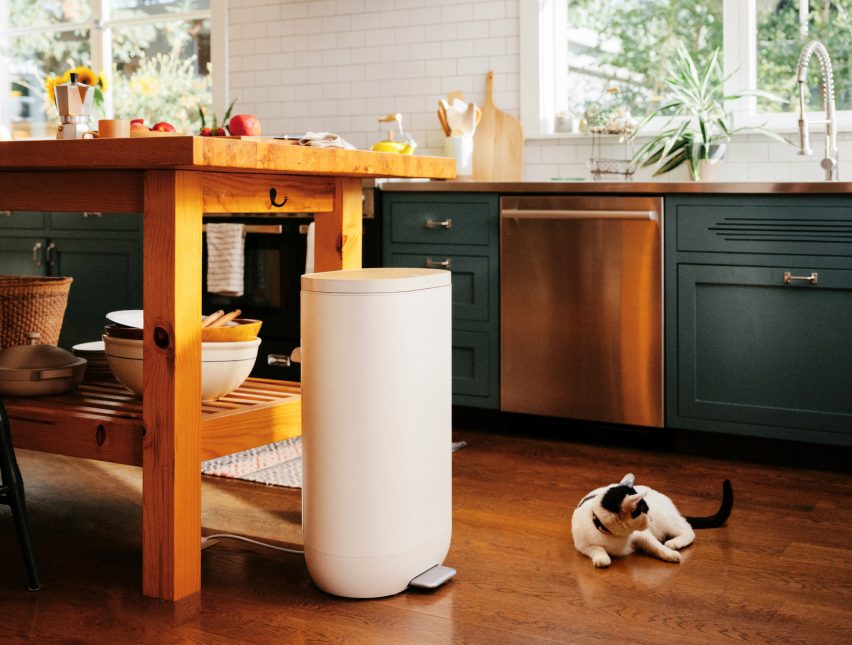
“And what’s worse is that, when food ends up in a landfill, not only do we waste all the nutrients and resources that went into growing it and getting it to your plate, it releases methane,” he continued.
Methane accounts for about 20 per cent of global greenhouse gas emissions but because of its potency, it is estimated to trap approximately 86 times more heat in the atmosphere than an equivalent amount of carbon dioxide on a 20-year timescale.
Rogers and Tannenbaum started by thinking about all the ways that the experience of dealing with home food waste could be improved – “no smell, no flies, less trips taking out the trash” – and tried to deliver all these solutions in one package.
“Some of these things are built into the hardware, where the bucket is transformed into a bottomless pit,” Tannenbaum said. “80 per cent of food is water, so it shrinks down significantly when dehydrated so you have to take out the trash less.”
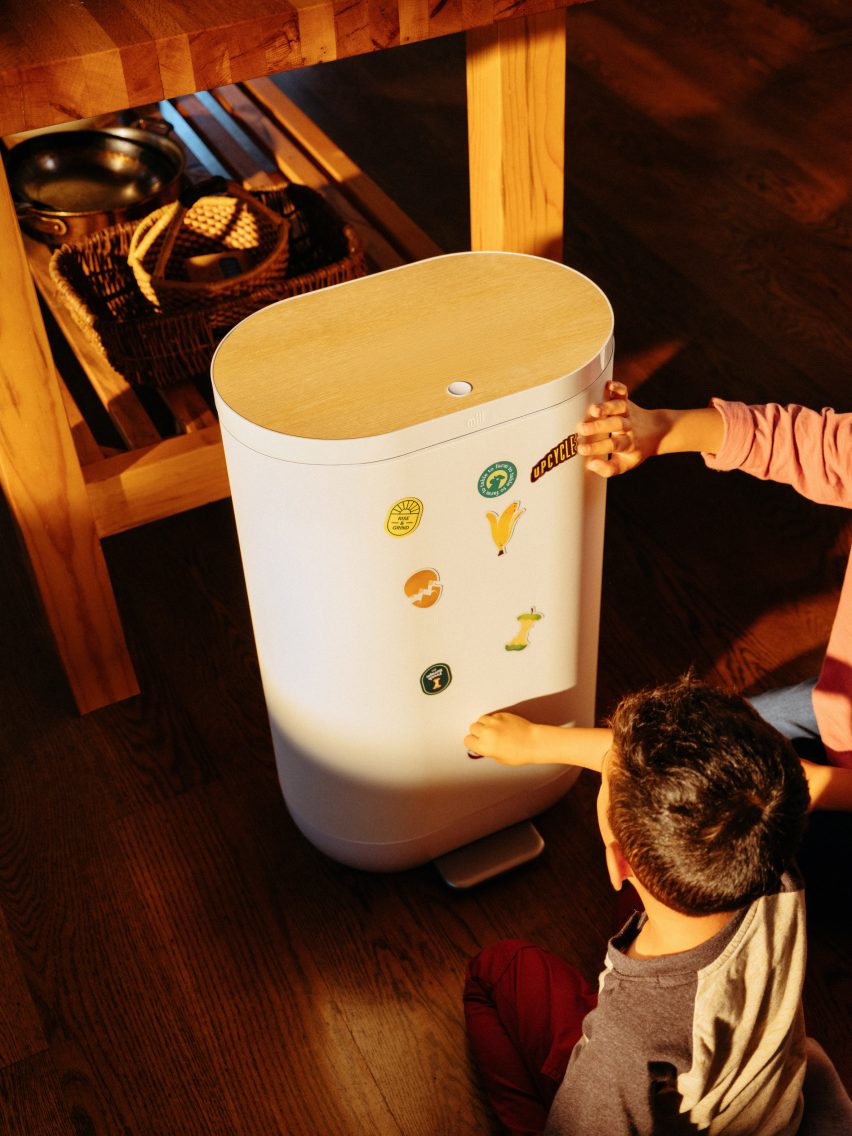
“Some are more subtle, like the impact tracking so you can see how much you’re wasting and become a better buyer and start saving money at the grocery store,” he continued.
The duo designed the bin in-house, aiming for a minimalistic look and a “friendly and approachable” pill shape, with the LED display interface hidden underneath a wood veneer lid so as not to command attention.

Mill has recently launched and is currently only available in the US.
Other innovations in waste disposal in recent years include the Townew bin that automatically seals and changes bin bags and the prototype Taihi bin, which composts waste using a Japanese fermentation method.

